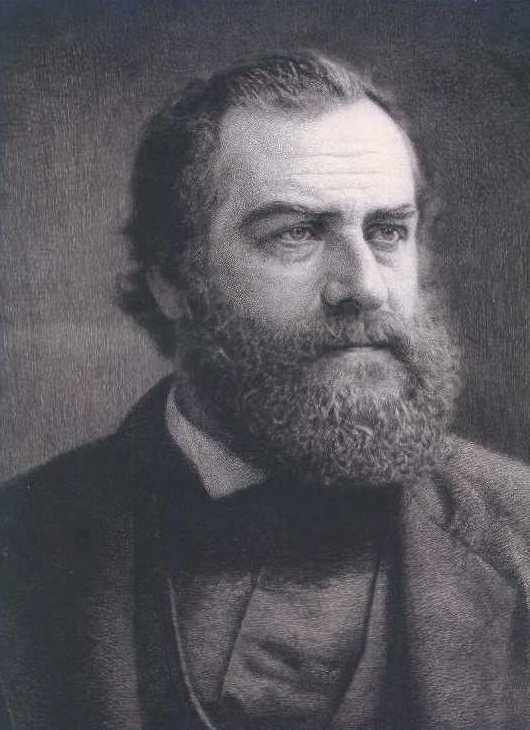- Joseph Leidy
Infobox Scientist
name = PAGENAME
box_width =
image_width =150px
caption = PAGENAME
birth_date =September 9 1823
birth_place =
death_date =30 April 1891
death_place =
residence =
citizenship =
nationality = American
ethnicity =
field =paleontology ,anatomy ,parasitology
work_institutions =University of Pennsylvania
alma_mater =
doctoral_advisor =
doctoral_students =
known_for =
author_abbrev_bot =
author_abbrev_zoo =
influences =
influenced =
prizes =
religion =
footnotes =Joseph Leidy (
September 9 1823 –30 April 1891 ) was an Americanpaleontologist .Leidy was professor of
anatomy at theUniversity of Pennsylvania , and later was a professor of natural history atSwarthmore College . His book "Extinct Fauna of Dakota and Nebraska" (1869) contained many species not previously described and many previously unknown on theNorth America n continent. At the time, scientific investigation was largely the province of wealthy amateurs.Leidy named the
holotype specimen of "Hadrosaurus foulkii", which was recovered from themarl pits ofHaddonfield, New Jersey . It was notable for being the first nearly-completefossil ized skeleton of adinosaur ever recovered. The specimen was originally discovered byWilliam Parker Foulke . He was also credited with describing the holotype specimens of "Arctodus " ("A. simus"), the dire wolf ("Canis dirus"), and the American lion ("Panthera leo atrox"), among [http://www.ansp.org/museum/leidy/paleo/fossil_species.php many others] .The noted American fossil collector and paleontologist E. D. Cope was a student of Leidy's, but the enmity and ruthless competition that developed between him and rival paleontologist O. C. Marsh eventually drove Leidy out of western American vertebrate paleontology, a field Leidy had helped found.
Leidy was an early American supporter of Darwin's theory of
evolution , and lobbied successfully for Darwin's election to membership in theAcademy of Natural Sciences ofPhiladelphia .Leidy was also a renowned parasitologist, and determined as early as 1846 that
trichinosis was caused by a parasite in undercooked meat [http://www.ansp.org/museum/leidy/other/parasitology.php#4] . He was also a pioneering protozoologist, publishing [http://www.bairbrepaws.com/psneeley/Fwr000.htm "Fresh-water Rhizopods of North America"] in 1879 - a masterpiece that is still referenced today.Leidy collected gems as well as fossils, and donated his important collection of the former to the Smithsonian before he died. At Swarthmore, he also taught a class on mineralogy and geology.
Family
Joseph Leidy was born on September 9, 1823, to an established
Philadelphia family of German extraction. His father, Philip, was a hatter; his mother, Catharine, died when he was young, whereupon his father remarried to his wife's sister, Christiana Mellick. With the support of his stepmother, and after overcoming the opposition of his father, Leidy studied medicine at theUniversity of Pennsylvania .He married Anna Hardin. Their marriage was childless, and they eventually adopted an orphaned girl. Emma Leidy is in his family.
Forensic innovator
In 1846, Leidy became the first to use a
microscope to solve a murder mystery. A man accused of killing a Philadelphia farmer had blood on his clothes and hatchet. The suspect claimed the blood was from chickens he had been slaughtering. Using his microscope, Leidy found no nuclei in theseerythrocyte s (human erythrocytes are anucleate). Moreover, he found that if he let chick erythrocytes remain outside the body for hours, they did not lose their nuclei. Thus, he concluded that the blood stains could not have been chicken blood. The suspect subsequently confessed.External links
* [http://www.ansp.org/museum/leidy/index.php The Joseph Leidy on-line exhibit at the Academy of Natural Sciences]
* [http://www.xmission.com/~psneeley/Personal/Leidy.htm The Joseph Leidy Microscopy Portal]
Wikimedia Foundation. 2010.
